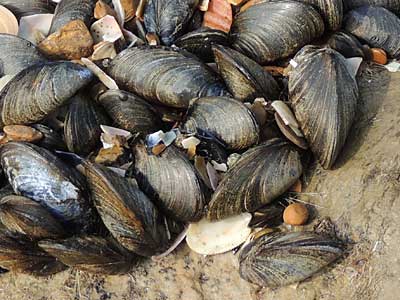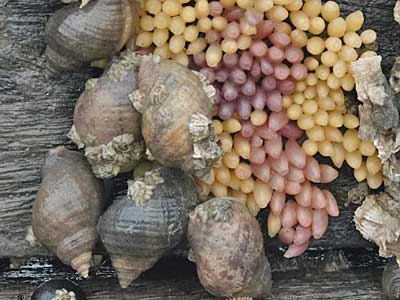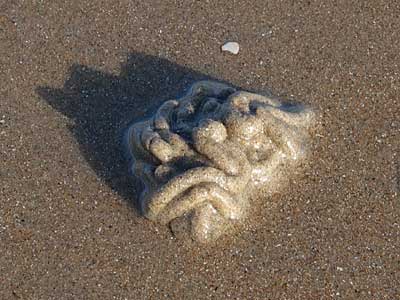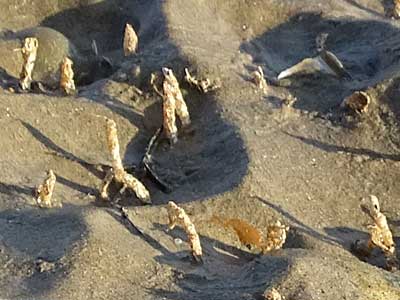Along rocks, pools & groynes
Rock-pools are fascinating places as they provide a refuge for many sea creatures when the tide goes out. They also harbour some sea weeds that prefer the relative shelter of a pool to being exposed on the outside of the rocks.
However you need to be careful when rock-pooling as the rocks can be very slippery when covered with seaweed. Those that have barnacles on can be hazardous too, as acorn barnacles have very sharp edges so you do not want to fall. You also need to keep an eye on the tide if it is coming in as it is easy to get stranded on the relatively high rocks. It is safest to exlore when the tide is going out.
Groynes and other inter-tidal structures are also good places to look for some of the creatures that you might find in pools. Barnacles and limpets always colonise them and you can often find sea anemones too. Dog Whelks often lay their eggs along the groynes.
Beadlet Anemone

When submerged these sea anemones use their stinging tentacles to catch their prey. Colours vary but this dark green is most common in our pools
Flat-top Shell

Fairly common in our rock pools, these are easily recognised by the shape and the purple on pale green stripes.
Acorn Barnacles

These small barnacles colonise lots of our rocks and groynes and have very sharp edges.
Mussels

This bivalve is very common, attached to rocks along our shore. The empty shells wash up on the strandline too.
Common Limpet

Limpets feed on algae when submerged but return to the same carefully shaped spot when the tide goes out
Dog Whelk

These Dog Whelks have laid their eggs along a groyne. They are carniverous, drilling into barnacles and mussels.
Periwinkle

Periwinkles are quite common in the pools and occasionally you may find one travelling across the sand.
Lugworm

Well, you won't see a lugworm unless you dig one out but you will find their wormcasts on the sand. Sea-anglers use them for bait.
Sand Mason

This worm constructs a tube of fragments of sand, rock and shell, but only pokes its head out to feed when the tide is in. Common on parts of our shore.
Common Piddock

Piddocks bore their way into clay or soft rock. Hundreds of old shells can be seen in some places where the tide has eroded the rock from around them.